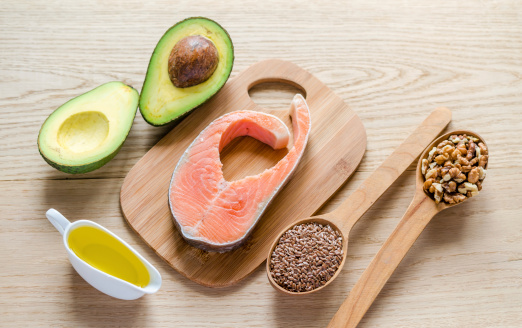How to Read a Nutrition Label
Article posted in: Diet & Nutrition
Part of living healthy and losing weight is making informed decisions about your food. But reading the Nutrition Facts Label on your favorite foods can be daunting. Although the United States Food and Drug Administration (FDA) has proposed changes to the label that would likely make it more consumer-friendly, it could be a while before these changes are implemented. In the meantime, here’s a simple overview of the Nutrition Facts Label and how to read food labels to lose weight and get healthy.
Serving Size
Conveniently located at the top of every food label, the serving information is the best place to start. Serving sizes are standardized, and are expressed using common measurement units like cups or tablespoons, which is helpful when comparing similar food items. As you read through the label, it’s important to remember the serving size because the nutrition information is for that quantity of food only. If you typically eat twice the amount listed as a serving, remember that you will be eating twice the amount of calories, fat, etc. indicated on the label.
Calories
Calories are important when reading food labels to lose weight. You count them, you burn them, you cut them. But do you really understand what calories are? In lay man’s terms, calories are a measurement of the amount of energy your body gets from food. To understand how many calories you’ve consumed from a specific food, you’ll first need to determine how many servings you’ve eaten. To do this, simply divide the amount of food you ate by the serving size. Then, you’ll multiply that number by the amount of calories in one serving. Here’s an example: If you eat one cup of trail mix, and the serving size is a quarter cup, you divide 1 by 0.25 to get 4. Then you multiply the calories included on the food label by 4 to find out how many you actually consumed.
The number of calories you should eat depends on a number of factors, including your height, weight goal, activity level and more. To make it easier to determine the caloric impact of foods, the FDA has issued these general guidelines: for a person consuming about 2,000 calories a day, a food containing 40 calories a serving is generally considered a low-calorie food, foods with 100 calories are deemed moderate, and those with 400 or more are considered high-calorie foods.
Percent Daily Value
You’ll notice a column along the right-hand side of the label with the header “% Daily Value” (%DV). This column provides a guide to help you determine how much one serving contributes to your daily needs for specific nutrients. For example, a 25 %DV of carbohydrates provides 25 percent of your total carbohydrate needs for the day. Generally speaking, a %DV of 5 percent or less is considered low, and 20 percent or more is considered high. Keep in mind that the %DV on all food labels is based on a 2,000 calorie diet. If you’re following a lower calorie diet, you may require less of these nutrients.
Fat and Sodium
Information about these nutrients follows the calorie information on every label. Since saturated fats, trans fats and sodium can increase your risk for a number of chronic diseases and health conditions like cancer, heart disease and high blood pressure, it’s important to aim for a low %DV of these nutrients. Although food labels do not include a % DV for trans fat, health experts recommend limiting this type of fat.
When choosing between two similar food items, read the nutrition labels and always try to choose the option that is lowest in saturated fats, because these are strongly linked to diseases. Also try to replace saturated and trans fats with the “better” kinds of fat, monounsaturated and polyunsaturated fats, which are found in fish, nuts and liquid vegetable oils. Sodium is associated with high blood pressure, so it’s smart to limit it, too.
Cholesterol
Although previously, the Dietary Guidelines for Americans recommended that cholesterol intake be limited to no more than 300 milligrams per day, the recently released guidelines do not place a restriction on cholesterol consumption given the lack of evidence linking dietary cholesterol to blood cholesterol. Therefore, cholesterol is no longer regarded as a nutrient you need to focus on limiting.
Vitamins, Minerals and Fiber
Consuming adequate quantities of dietary fiber, vitamins and minerals can help improve your health and reduce the risk of chronic disease. Included in the FDA’s proposed changes to the Nutrition Facts Label is a recommendation to remove vitamins A and C; most Americans get enough of these nutrients. The FDA has also recommended that vitamin D and potassium be added to the label since some populations are not getting enough of these nutrients, which are beneficial to bone health and lowering blood pressure, respectively.
When it comes to foods, the higher the %DV for these nutrients, the better. Although individual foods don’t always need to contain large amounts of these nutrients, it’s important that over the course of a day you get close to 100 percent. Reaching for lots of fruits and veggies is a great way to meet your daily needs for these vitamins, minerals and nutrients.
Protein
Because most Americans actually consume more protein than they need, a %DV isn’t required on food labels. But it’s still important to keep an eye on this nutrient. The Recommended Daily Allowance (RDA) of protein for sedentary adults is about 0.8 grams per kilogram of body weight (helpful hint: to convert pounds to kilograms, just divide your weight by 2.2). Lean meats, poultry, fish, eggs and low-fat dairy sources like yogurt, milk and cheese are all good sources of protein. Beans, nuts and nut butters also dish out this nutrient.
Carbohydrates
It’s important to read the %DV for this nutrient when selecting foods. There are three types of carbohydrates: fiber, sugars and starches. Consuming enough fiber may help reduce the risk of developing chronic diseases like heart disease and is necessary for digestive function. By opting for whole-grain breads, cereals, rice and pastas, plus fruits and vegetables, you’ll get the most health benefits from your selections.
Since too much sugar―particularly added sugars—can lead to excess calorie consumption and can displace the nutrients your body actually needs, it’s important to limit added sugar in your diet. Luckily, added sugars are now being added to the Nutrition Facts label so that you can easily see how many grams there are in your foods. You can also read the ingredients list and avoid foods that include sugar in the first position of the list.
Ingredient List
Foods containing more than one ingredient must include an ingredient list on the label. The ingredients are listed in order of weight, with the largest amounts listed first. This information can be helpful for those trying to avoid certain ingredients, like added sugars or allergy-causing compounds.
Looking for a healthy meal delivery service to help you lose weight? We’re here for you! Get started with a Nutrisystem plan today.
















